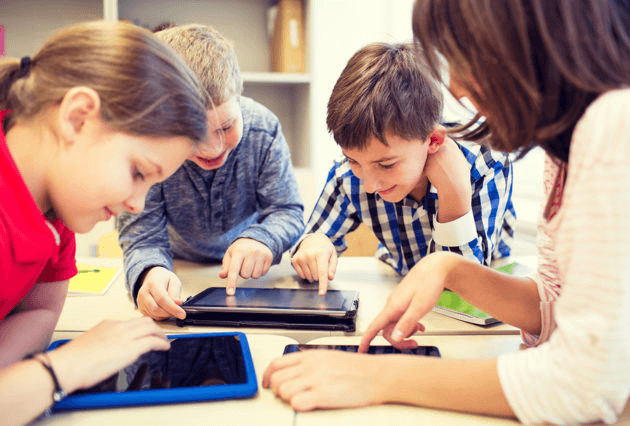
By ALIYYA SWABY , Texas Tribune
Earlier this summer, Kristina Boshernitzan and a group of neighbors stood in the driveway of her Austin home for a socially distanced meeting to figure out how to take greater control of their childrens’ educations.
With the coronavirus spread over the past month and plans to safely reopen schools shifting to a virtual-only start, the parents grappled with the increasing prospect that it might be unsafe, or impossible, to send their children back to school in the fall.
Each faced difficult decisions. One neighbor’s husband had stage 4 cancer, and she didn’t want her children to expose him to the new coronavirus, which they might pick up in a classroom. Another mother had young twins with lung issues. Just a cold is enough to send them to the hospital, and they can take no risk of being exposed to COVID-19.
Boshernitzan, who works full-time at a nonprofit, wanted parents to pool resources and find ways to make virtual learning easier. They discussed hiring a college student or nanny to help children complete their online school district coursework, or finding a music or arts instructor who could replace enrichment courses while schools are closed for in-person learning.
To reach even more parents, she created a private Facebook group for parents in northwest Austin who want to connect and form “learning pods,” a term she said is “in the zeitgeist right now.” In less than two weeks, the group gained almost 500 members.
Such scenes are playing out across Texas and the country as school districts delay their return to in-person instruction this fall and COVID-19 cases continue to surge. Parents will be playing an even bigger role in determining what and how their children learn, and they are deploying all the resources they have at their disposal to ensure it goes more smoothly than in the spring.
For some, like Boshernitzan, that means organizing learning pods in which families pool their money to hire an instructor and take turns hosting small groups of students to follow the school district’s learning plan at home. Others are withdrawing their children from public schools entirely and planning to home-school with learning materials they can find online for free and at cost. Some parents with younger children are sticking with trusted private child care centers that separate students and follow strict health codes.
Education gap
But many parents don’t have the money to hire private instructors or the flexibility to home-school their children.
The decisions parents are making in response to the opening dates, remote learning and do-it-yourself education coming this fall underscore the fact that the pandemic will exacerbate education gaps between higher-income and low-income students, as well as white students and students of color.
Research published by the Centers for Disease Control and Prevention suggests there are higher rates nationally of hospitalizations and deaths related to COVID-19 among some people of color than there are among white people, and that circumstances such as being an essential worker and lacking health insurance are related to these risks.
Low-income, Black and Hispanic Texans are more likely than high-income and white Texans to be essential workers and to lack health insurance. And those families, a majority in Texas public schools, are less likely to be able to afford private supplements to their children’s education.
Some with money and resources will sprint ahead. Those without will lag behind including some who don’t have access to laptops or Wi-Fi hotspots.
“There’s ugly sides to parenting, and I think the idea that I’m going to protect my kids first is really beautiful and really ugly,” Boshernitzan said. “How do you balance your desire to give to your kids without taking away from others?”
Public schools
Texas gave public school districts more flexibility two weeks ago on how long they can keep their campuses closed, with educators and parents clamoring that it wasn’t safe to return.
Over the last couple of months, state officials have postponed and walked back guidance multiple times, as the politics and health concerns of the pandemic shift — preventing districts from finalizing safety plans or reopening dates.
Texas public schools are funded based on daily attendance. Texas is requiring school districts to count the number of students who attend remotely and announced two weeks ago it will give school districts a break if their attendance drops dramatically during the first 12 weeks.
Learning pods
Largely unsure about their public schools’ plans, hundreds of Texas parents are joining local Facebook groups connecting parents who want to share the responsibilities and costs of hiring instructors to facilitate online learning for their children. The learning pod trend has caught on across the country, especially among upper- and middle-class families with kids in public schools.
A whole new industry is springing up around the learning pod trend, with new organizations offering to connect pods of families with teachers or tutors. The Texas Learning Pod, for example, started by a University of Texas at Austin student, links families with college students, offering packages that range from $20 to $55 per hour depending on the number of children and grade levels. And public and private school teachers who are worried about getting sick when schools resume in person are looking for opportunities to teach learning pods.
Boshernitzan and her husband both work full time and are considering a combination of a private child care and a learning pod for their three elementary-age children. A strong proponent of public schools, she plans to send her kids back to Austin ISD in person as soon as it’s safe, and she recognizes how lucky she is to have options.
The Texas Tribune is a nonpartisan, nonprofit media organization that informs Texans — and engages with them – about public policy, politics, government and statewide issues.

